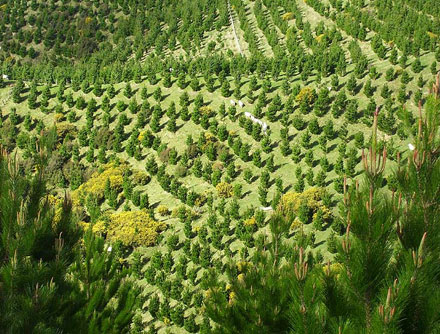
The launch of the Government’s Provincial Growth Programme is expected to result in Hawke’s Bay benefiting from an increase in commercial forestry plantings. Source: New Zealand Herald
As part of the program, Pamu Farms of New Zealand (formerly Landcorp) will plant up 1000 hectares of land in the 2018 winter, as part of the Government’s forestry-planting program.
“Pamu has been working with the Ministry for Primary Industries (MPI) to finalise commercial terms that will see up to 2000ha of forest being planted in 2018 and 2019,” Pamu chief executive Steve Carden said.
“As New Zealand’s largest farmer, we have always seen forestry as an important part of our strategic direction – from a commercial as well as an environmental and sustainability perspective.
“This Government’s forestry program fits well with our own strategic direction in forestry and we are pleased to support the Government’s forestry initiatives.
“It makes sense to be planting trees on rural land where the use has changed or is marginal. Farmers have been doing this for years, recognising that it is good for the environment, and for the economic activity it brings to rural New Zealand.”
Pamu has almost 10,000ha planted in a range of trees. The mix of trees to be planted is still to be finalised, as are the locations however, Northland and East Coast/Hawke’s Bay regions along with some South Island farmland, are under consideration.
Forestry Minister Shane Jones said the announcement would provide a big boost for the forestry sector and create more jobs and training opportunities.
“Our climate change objectives will be advanced and our use of natural resources will be more sustainable and productive.
“We have a strong base to build on, with the commercial forestry sector projected to plant half a billion trees in the next 10 years. We’re already seeing private landowners, government agencies, NGOs, iwi, regional councils, nurseries and the private sector working hard to plant the other half a billion.
“Planting will be lower in the initial years due to natural seedling and land constraints, but will then ramp up quickly.
“All of this combined will see us go from 55 million trees this year, to 70 million a year in 2020, to 90 million in 2021. From there we will be aiming for 110 million a year over the next seven years of the program.
“This year, almost 7.3 million trees will be planted through various Ministry for Primary Industries schemes – about half of which will be indigenous species.
“Planting will include both exotics and natives. We want to enable planting of a mix of permanent and harvestable forestry, using both exotic and native tree species on private, public and Maori-owned land. Species include radiata pine, red wood, totara, eucalyptus, Douglas fir and manuka.
“This is certainly about commercial crops, but it is also about environmental, regional and other gains as well.
“We are finalising an agreement with Landcorp to plant 1 million trees this winter and another million trees next year – about 2000ha in total – and a review of its portfolio to identify any other potential land for planting.
“We expect to be able to make more announcements about where trees will be planted this year in the coming months.”





